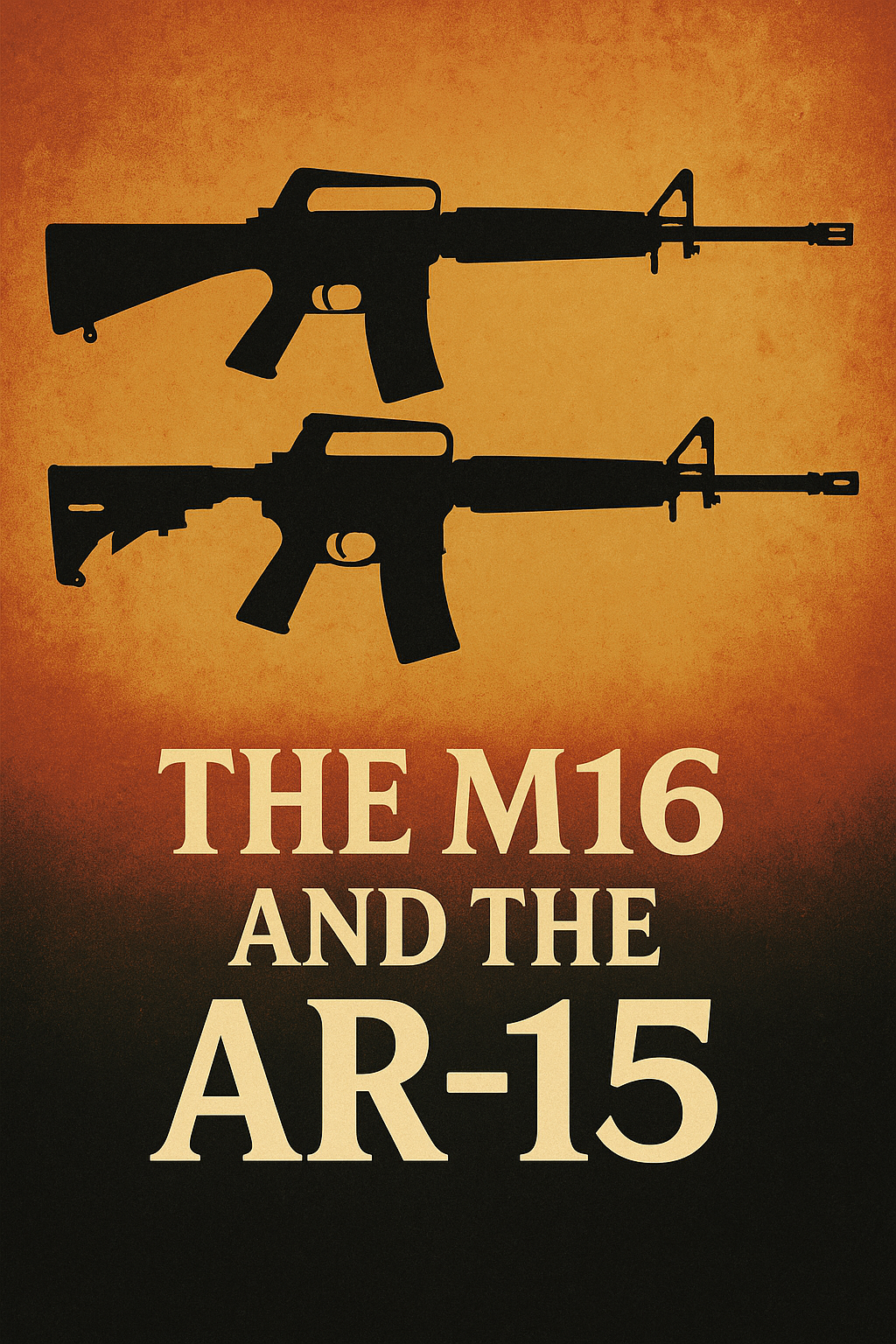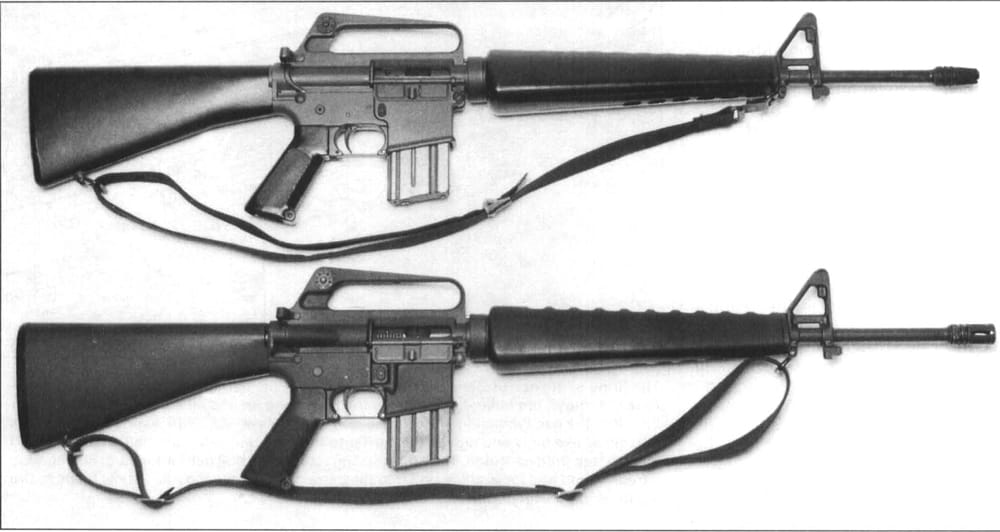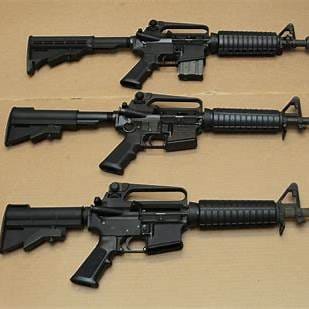M16 to AR-15: How a Military Rifle Became America's Favorite Firearm
The M16 and AR-15 are among the most iconic and controversial rifles in modern firearm history. -Rafael Benavente

From Battlefields to Backyards: The History of the M16 and AR-15
Introduction
The M16 and AR-15 are among the most iconic and controversial rifles in modern firearm history. Both rifles have their roots in innovation, controversy, military necessity, and civilian adaptation. Understanding their histories offers valuable insight into how these firearms became central in both military arsenals and American civilian culture.
Origins of the AR-15 and Eugene Stoner
The story begins in the late 1950s when Eugene Stoner, working at ArmaLite, designed the AR-10—a revolutionary rifle featuring lightweight materials such as aircraft-grade aluminum and synthetic polymers, and a novel gas-operated action.
The AR-10's successor, the AR-15, chambered in .223 Remington (later standardized as 5.56×45mm NATO), caught the attention of the U.S. military due to its lightweight and manageable recoil. In 1959, ArmaLite sold the AR-15 design to Colt's Manufacturing Company, leading to further development and military trials.
Military Adoption and the Birth of the M16
In 1964, after rigorous military testing, the AR-15 was officially adopted by the U.S. Air Force as the M16 rifle. The Army soon followed, particularly driven by the rifle's suitability for jungle combat during the Vietnam War. However, the early deployment faced significant challenges:
- Jamming and reliability issues, primarily due to ammunition changes and lack of proper cleaning kits.
- Inadequate troop training and misconceptions about maintenance led to battlefield failures and loss of confidence among soldiers.
To rectify these issues, improvements were swiftly implemented, including chrome-lined barrels, modified ammunition powder, better training, and the issuance of cleaning kits. By 1967, the improved version, the M16A1, emerged as a reliable and effective combat weapon.

Evolution of the M16
Over the following decades, the M16 underwent continuous evolution:
- M16A2: Introduced in the 1980s with a heavier barrel, improved sights, and a three-round burst mechanism instead of fully automatic fire.
- M16A3/A4: Featured further advancements, including modular rail systems to accommodate optics, lasers, and other accessories, greatly enhancing the rifle’s versatility.
- M4 Carbine: Derived from the M16, this shorter, lighter variant became the standard-issue rifle for U.S. forces, especially suited for close-quarter combat and urban warfare.
Today, variations of the M16 and M4 remain frontline weapons for militaries globally, reflecting the enduring relevance and adaptability of the original design.

Civilian Popularity and the Rise of the AR-15
Parallel to military use, the civilian variant of the rifle, still named the AR-15, gained enormous popularity among American firearm enthusiasts. Introduced to the public by Colt in the 1960s as a semi-automatic version of the military M16, the civilian AR-15 became well-regarded for:
- Modularity and customization, earning it the nickname "the Lego of rifles."
- Versatility for various shooting disciplines, from competitive shooting and hunting to recreational shooting and home defense.
The AR-15’s popularity soared especially after the expiration of the Federal Assault Weapons Ban in 2004, establishing it as the best-selling rifle in America.
Controversies and Cultural Impact
Despite—or perhaps because of—its popularity, the AR-15 remains at the center of significant debate:
- Proponents highlight its versatility, accuracy, ease of use, and its utility in self-defense and sporting activities.
- Critics point to its frequent use in mass shootings, calling for tighter regulation or bans.
This debate has transformed the AR-15 into more than just a firearm—it has become a powerful political symbol, representing broader societal divides over gun rights and public safety.
Conclusion: Legacy and Future
From their inception, the M16 and AR-15 have significantly shaped both military practices and civilian firearm ownership. Their histories illustrate how technological innovation, military strategy, and societal factors intertwine to influence firearm design and public perception.
Regardless of one’s stance on gun policy, understanding the history and context of these firearms helps inform more nuanced discussions about their role in society today and in the future.
recommend you also read another related article here.
